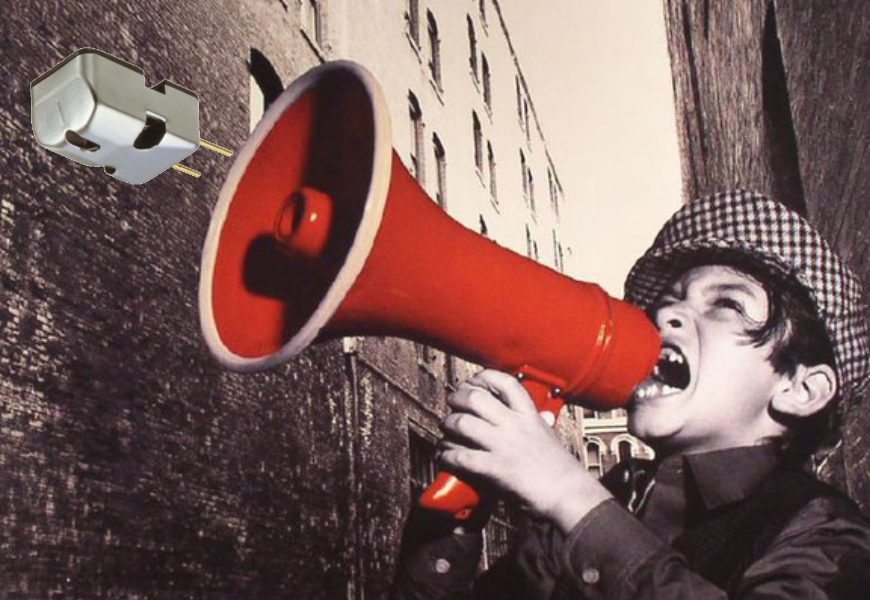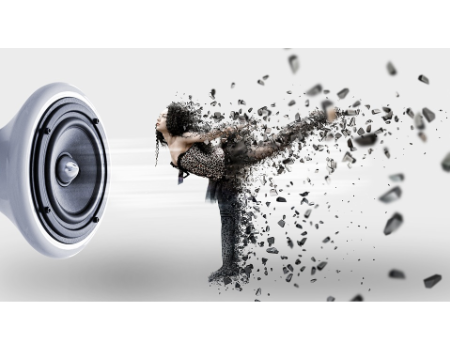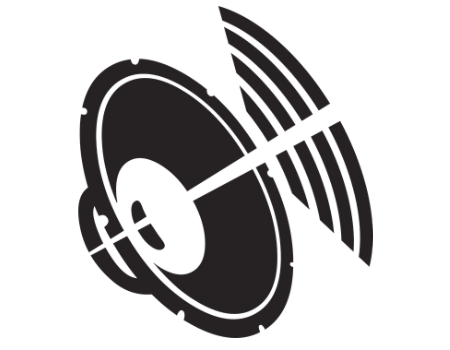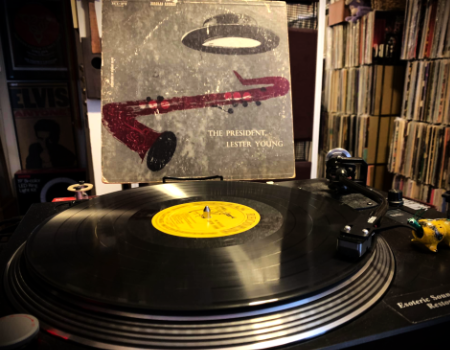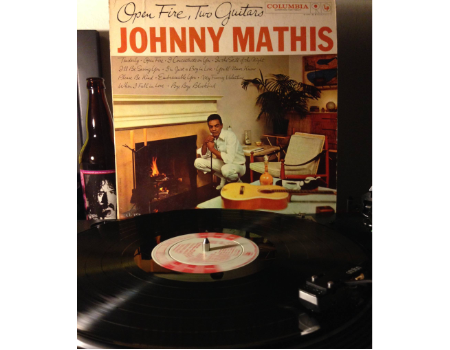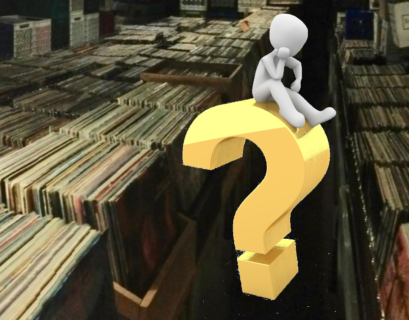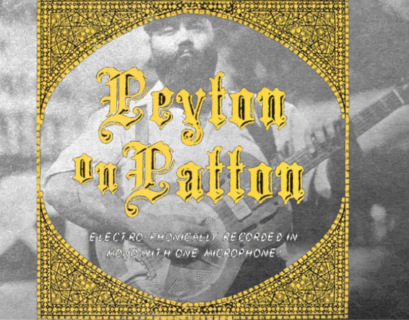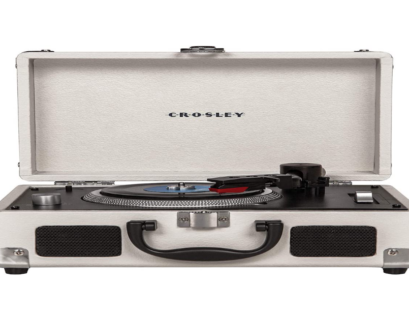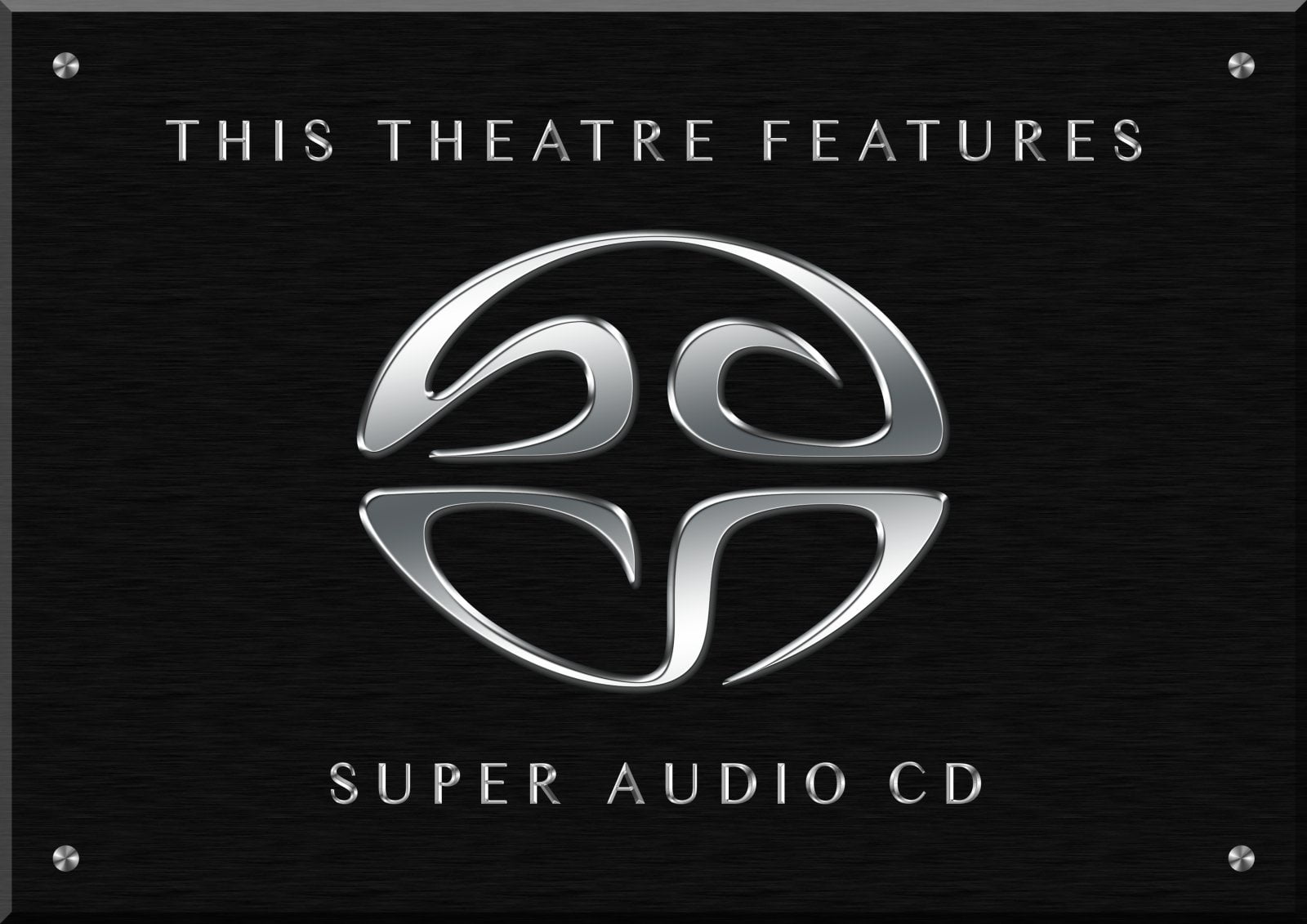It’s the time of year for saving money!
Some of you may know by now that in the past year I undertook a bit of an experiment investing about $250 in a Denon DL-102 Monophonic phono cartridge.
 I did this after being urged by numerous friends on Facebook who noticed that I was posting pics of many old Monaural jazz and rock LPs I own from the 1950s — they assured me that I would be surprised how great old non-stereo albums could sound when played with a cartridge that was designed specifically for their playback.
I did this after being urged by numerous friends on Facebook who noticed that I was posting pics of many old Monaural jazz and rock LPs I own from the 1950s — they assured me that I would be surprised how great old non-stereo albums could sound when played with a cartridge that was designed specifically for their playback.
I approached one of my audiophile journalist friends from the consumer electronics industry for some guidance: Michael Trei. Also renown for his expertise in setting up audiophile turntables and related high end sound systems, Michael pointed me toward the Denon cartridge for its design and balance of performance specs for the price. The next option for me would have been an Ortofon cartridge at twice the price, an investment I wasn’t quite ready to make at this (if you will) embryonic stage.
Or would that be embry-monic…
Bad puns aside, I went for the Denon. And I’ll skip cumbersome details of the technical hurdles I had to clear to make it work for my turntable set up (such as the weight of the cartridge requiring me to jerry-rig additional counterbalance weights to use this model… apparently, a common practice/occurrence). Thankfully, Michael helped me set up the cartridge properly on one of his visits to the West Coast so its working just ducky now (note: Michael also helped me with some fact checking on this article so much kudos go out to him for clarifying certain technical details).
Anyhow, while participating in a number of these Facebook record collecting and audiophile oriented groups (again, where participants post pictures of albums being played, cool rarities, nifty gear and such… its a total audio geek fest!), numerous people have asked me to write about my experience with the Mono cartridge.
I’ve been grappling with this for months since trying to figure out a useful angle for the story.
I mean… on one hand it might be enough to just say: ‘Hey kids, your mono records from the 1950s and early 1960s will sound their best via a dedicated Mono cartridge!’
But I suspect that wouldn’t be very compelling or interesting for most people…
Perhaps then I could go into more detail technically as to WHY it sounds better. There are a several reasons actually… one has to do with the Monaural cartridge tracking only lateral information in the grooves, thus ignoring the other information that might be picked up by a stereo cartridge (ie. scuffs, scratches, etc.). As Michael explained it : “In a stereo record, the left and right grooves are in opposite phase. So mono information results in lateral stylus motion. It’s the in phase stuff that results in stereo, so if you ignore that, it cancels.”
 The other reason has to do with the physical groove width of early Monaural LP records — even though they are technically called “microgroove,” some are a bit wider than the later albums made in the late 1950s and beyond (when they started using stereo cutter heads). Thus, the somewhat wider stylus on a dedicated Mono cartridge rides more in the center of the groove, avoiding information stuck in the bottom of the groove — which, in old records can contain a combination of residual dirt/gunk as well as groove damage from being played on old, poorly aligned record players with super heavy tone arms and/or with old damaged “needles.” Depending on the thickness of your stylus, there is the possibility for it to dig down into the bottom of the groove, thus possibly picking up that noisy information along the way.
The other reason has to do with the physical groove width of early Monaural LP records — even though they are technically called “microgroove,” some are a bit wider than the later albums made in the late 1950s and beyond (when they started using stereo cutter heads). Thus, the somewhat wider stylus on a dedicated Mono cartridge rides more in the center of the groove, avoiding information stuck in the bottom of the groove — which, in old records can contain a combination of residual dirt/gunk as well as groove damage from being played on old, poorly aligned record players with super heavy tone arms and/or with old damaged “needles.” Depending on the thickness of your stylus, there is the possibility for it to dig down into the bottom of the groove, thus possibly picking up that noisy information along the way.
You can see, however, that this sort of deeper technical discussion quickly gets confusing for those of us who have limited technical comprehension. Heck, even my brain and eyes start to glaze over as I’m trying to proof read this article!
Then I realized that there is another more basic, practical rationale for investing in a Monaural phono cartridge for your high fidelity, audiophile-quality Monophonic listening needs.
The reason: saving money and perhaps getting a little more bang for your music buck…
Consider first: the cost of buying brand new reissues of old Mono albums. Those things can be pretty expensive, especially if you a going for the fancy 200-gram limited editions. And if you are like me, an insatiable consumer of all sorts of music, spending $25 – $50 a pop for an album reissue can add up quickly.
Consider second: the cost of buying old original pressings that are in really good condition. Its not easy finding some of these records even in the collectors shops and when you do they can be as pricey as that new reissue or — in the case of some early 1950s albums that are super rare — much more expensive.
So, with that in mind, consider (thirdly) the prospect of being able to pick up far less expensive — but sometimes no less rare — copies of old albums that are, frankly, kinda beat up or simply just not looking pristine. What if you could play them and experience the joy of Mono for, essentially, a fraction of the cost?
You can! I’ve been doing it…
Take for example, the late 1950s Mal Waldron album (on Bethlehem Records) that I picked up at a garage sale last year for $2: it looks like someone played frisbee with it. Honestly, I bought it primarily for the cover in case I ever came across a better condition copy. I’d never seen that album before and there are pretty much only reissues available up on Discogs and eBay; if you could find this album on an original pressing, I suspect the cost would be in the hundreds of dollars. Most of the reissues (many of which are Japanese imports) are going for around $50 a disc.
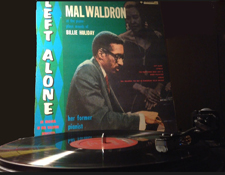 That said, I was pretty stunned to discover — after cleaning this album up — that the sound was fairly spectacular even on my alternate stereo cartridge which I use for playing older albums (an older Sumiko Pearl). However, when I eventually played that album on the Mono Denon cartridge, the results were nothing short of astonishing. One side has a pretty bad looking scratch on it but even that only appears sonically as a very quiet (and intermittent) light pop in the background when played on the Mono cartridge. The music otherwise jumps gleefully out of the speakers — it is a wonderful album that I would have otherwise never had a chance to really consider owning (apart from on a CD or download, a potentially lesser listening experience).
That said, I was pretty stunned to discover — after cleaning this album up — that the sound was fairly spectacular even on my alternate stereo cartridge which I use for playing older albums (an older Sumiko Pearl). However, when I eventually played that album on the Mono Denon cartridge, the results were nothing short of astonishing. One side has a pretty bad looking scratch on it but even that only appears sonically as a very quiet (and intermittent) light pop in the background when played on the Mono cartridge. The music otherwise jumps gleefully out of the speakers — it is a wonderful album that I would have otherwise never had a chance to really consider owning (apart from on a CD or download, a potentially lesser listening experience).
Recently at a store in central California, I found a 1954 Lester Young album (The President) which I purchased for $2.50. On the surface, this album looked pretty wrecked — again, I bought it for the lovely David Stone Martin cover art with hopes of someday finding a better condition LP to replace it. However, after cleaning and playing it on the Mono cartridge, a very enjoyable and rare performance was revealed. Sure, there are some crackles, but on the Mono cartridge most of that falls into the background and does not detract from my enjoyment of the music. This is one of those pieces of jazz history worth enduring that sort of anomaly.
If you could find a mint original pressing it would cost in the hundreds of dollars. There is a VG+ condition copy being sold up on eBay with an asking price of $300.
You really have to ask yourself: is the album worth it to me to spend $300? If you are a Lester Young fan and seeking a fairly clean original pressing, it may well indeed be worth it to you. But, again, many — and dare I say, “most” — of us don’t have the budget to spend that kind of coin on a single album. And without having heard this album before, I probably wouldn’t want to spend $300 on it. But perhaps, just perhaps, imagine if this DID become one of my all time favorite records — well, then I might someday decide it is worth it to upgrade to a better condition copy that might cost a bit more. Until then, I can enjoy the less than perfect copy which I bought for $2.50 just fine.
Its a trade off , no doubt… I find it a great way to “test drive” a recording before you make the investment in a high priced mint original pressing or a super duper deluxe reissue.
So … wouldn’t it be nice to be able to just pick up old Mono albums you find in the bargain bins, clean them up and enjoy them for what they are, and perhaps getting some really great sounding recordings along the way? Those fairly common old Shelly Manne & His Men albums on Contemporary Records that one sees in thrift shops, garage sales and the bargain bins at places like Amoeba Records all the time can sound pretty amazing in Mono!
This Denon cartridge is also breathing new life into my existing collection of Monaural records.
I’ve been pretty stunned hearing how great some of my old 45 RPM singles sound when played via the Mono cartridge. The old Buddy Holly singles sound particularly great, revealing much of the room ambiance from the studio where the records were made. There is a tremendous sense of depth and soundstage on these recordings, placing the drum kit further back in the room and the guitar and bass closer up front. “Peggy Sue.” “Oh Boy.” “Not Fade Away.” Classics that sound close to the way they were meant to be heard: in Mono spinning at 45 RPM! I even asked an audio engineer friend about this and if I was imagining things ; he assured me that the mixes I’m hearing were designed and optimized for the 45 RPM single format. I have never heard Buddy Holly recordings on LP or CD which sound quite like these Mono singles played with a Mono cartridge.
My near mint white label DJ promo 45 RPM single of The Chordettes’ “Mr. Sandman” sounds especially wonderful via the Mono cartridge…
I have a beautiful looking Mono white label promo LP (Six-Eye, Columbia, for those of you into that sort of detail) of Johnny Mathis’ spectacular (and overlooked) 1959 album Open Fire, Two Guitars that unfortunately sounded terrible when played on a stereo cartridge. I was very disappointed by this. I’m not sure what happened to the album as it looks to be fairly pristine, but one channel is seemingly damaged with an annoying / consistent noise. However, playing that same disc via the Mono cartridge proved to be a revelation: that noise disappears and I hear the underlying clean, quiet, gorgeously recorded Mono mix instead!
Heck, even the recent 2016 monaurally-mixed recording by The Mavericks — called Mono, which I reviewed some months back — sounds quite a bit better when played on the Mono cartridge!
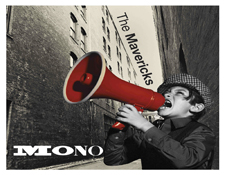 But really, the joy of getting a dedicated Mono cartridge is not just about being able get good sound out of damaged records. I’m finding that some of my favorite albums from the 1950s sound better than ever when played with a Mono cartridge. From Bye Bye Blues by Les Paul & Mary Ford (Capitol Records) to Sarah Vaughan’s 1954 gem with Clifford Brown (on EmArcy Records), these records that already sounded great sparkle with newfound vitality played with the Mono cartridge.
But really, the joy of getting a dedicated Mono cartridge is not just about being able get good sound out of damaged records. I’m finding that some of my favorite albums from the 1950s sound better than ever when played with a Mono cartridge. From Bye Bye Blues by Les Paul & Mary Ford (Capitol Records) to Sarah Vaughan’s 1954 gem with Clifford Brown (on EmArcy Records), these records that already sounded great sparkle with newfound vitality played with the Mono cartridge.
Going to the extreme of getting a Monaural cartridge may not be everyone’s cuppa tea — and perhaps its more hassle than many of you want to deal with.
I get that.
But for those of you who do listen to a lot of old Mono recordings, it might be a worthwhile experiment for you to consider, just as I did.
You might just make some fun discoveries along the way.
And isn’t having fun a big part of what all this audiophile and record collecting stuff is all about?
